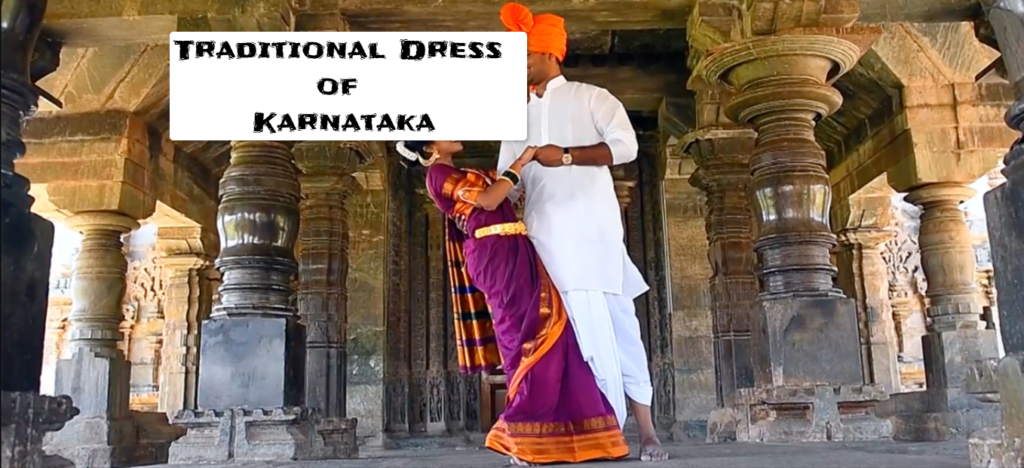Karnataka’s cultural richness is not something we need to describe, do we? The people are the ones who preserve culture. You will find that this is the case in any town, city or village. Everyone respects their culture and they love to show it off by wearing traditional Karnataka dress. Today, we’re going to look at both the men’s and women’s traditional Karnataka dress. Here we go.
Traditional dress of Karnataka men
1. Panche (Dhoti)
The Panche is a very important piece of clothing for Karnataka. The panche is usually made from silk or cotton and is long enough to reach the ankle. It is tied around the waist. Panche, made of light and breathable fabrics, is a great way to dress in the hot climate of South India. The piece of Panche is soft and flexible. It can be worn every day or during special occasions, such as weddings or religious events.
2. Angavastram
Angavastram is a type of stole that goes with Panche for a traditional look. Usually worn across the shoulder, it is made of the same fabric as the Panche. It is usually draped across the neck or on one shoulder. The Angavastram adds a touch of class and seriousness to any outfit.
3. Mysore Peta Headgear
Mysore Peta, which is similar to a Turban, is an integral part of Karnataka’s traditional clothing. It is usually made of silk, and has gold threads. The Mysore noblemen and kings wore it as a symbol of honor and royalty. Mysore Peta, which represents respect for culture pride, is now worn during celebrations. Mysore Peta represents the history and heritage of Karnataka, not just a headband.
4. Kupya (Traditional Jacket)
The Kupya jacket is unique to the Kodagu people of Karnataka. The coat is worn over a shirt with a traditional Panche. It is knee-length. Kupya, made of cotton or wool are worn at formal events, especially when the groom wants to stand out. This style is so distinctive that it gives the Kodagus a sense of cultural identity.
Traditional dress of Karnataka women
1. Mysore Silk Sarees
The Mysore Silk Saree is one of Karnataka’s most treasured contributions to Indian textiles. These saris are all the way from Mysore, the royal city. The sari is made of pure silk with gold thread detailing. Mysore silks are known for their light, shiny look. They are popular at weddings and festive occasions. The traditional Karnataka marriage ceremony is made more elegant with this saree.
2. Ilkal Sarees
Ilkal sarees, which originate from Karnataka’s northern region, are characterized by their distinctive weaving style and design. These sarees can also be woven using a mixture of cotton and silk. These sarees are distinguished by their geometrical pattern and sharp contrast color. The pallu is the lower end of the saree. It has red and white stripes that reflect the culture of the region.
3. Kanchipuram Sarees
Kanchipuram Sarees, originally from Tamil Nadu have a special place within Karnataka’s traditional wardrobe. This is especially true during important ceremonies and religious occasions. The sarees are woven with heavy silk and have intricate borders. They also feature gold threadwork. These designs often included temples, floral images, or stories from mythology.
4. Giri Kumkum Bridal Sarees
Giri Kumkum Sarees are unique to Karnataka and made for brides. The deep color and rich texture of the sarees symbolize marital bliss and prosperity. You are witnessing an ancient tradition when you see a bride wearing a Giri kumkum saree. This tradition celebrates marriage and its beauty.
5. Silk Tops and Skirts
Karnataka’s young girls and women who are not married often wear matching silk skirts with their sarees. This outfit is popular at cultural festivals and family events. This fabric has a lighter texture than a sari and can be worn with ease.
Conclusion
Karnataka’s people are very aware of the importance of preserving their culture and expressing this in their everyday attire. This seems to be true for pretty much every state in India. We’ll see you next time in another state to explore the culture and traditional dress of the people.


